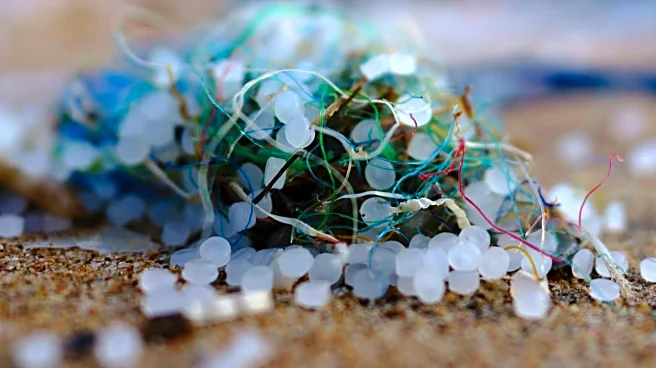What's Happening?
Researchers from the University of Padua in Italy have discovered microplastic particles in nearly all dairy products tested, including milk, fresh cheese, and ripened cheese. The study, published in the journal NPJ Science of Food, analyzed 28 retail samples and found microplastics in 26 of them. Ripened cheese showed the highest concentration, with an average of 1,857 particles per kilogram, followed by fresh cheese at 1,280 particles per kilogram, and milk with approximately 350 particles per kilogram. The microplastics identified include polyethylene terephthalate (PET), polyethylene, and polypropylene, which are commonly used in food packaging. The study highlights the presence of microplastics but does not assess their health effects.
Why It's Important?
The presence of microplastics in dairy products raises significant concerns about food safety and public health. Previous research has linked microplastics to various health issues, including heart and liver problems. The widespread contamination of food supplies with microplastics could pose a risk to consumers, potentially leading to toxicological effects such as oxidative stress and inflammation. As microplastics are found in various parts of the human body, including the lungs and liver, their impact on health is becoming increasingly evident. This study underscores the need for further research into the health implications of microplastic consumption and the development of strategies to mitigate exposure.
What's Next?
While the study did not evaluate the health effects of microplastics, it calls attention to the need for further investigation into their impact on human health. Researchers and policymakers may focus on understanding the pathways through which microplastics enter the food supply and exploring methods to reduce contamination during food processing and packaging. Additionally, public health campaigns could be initiated to educate consumers on ways to minimize exposure to microplastics in their daily lives. The findings may also prompt regulatory bodies to consider stricter guidelines for food packaging materials to limit microplastic contamination.
Beyond the Headlines
The discovery of microplastics in dairy products highlights broader environmental and ethical concerns. As microplastics are pervasive in the environment, their presence in food reflects the extensive reach of plastic pollution. This issue raises questions about the sustainability of current packaging practices and the responsibility of industries to address environmental impacts. The study may also influence cultural shifts towards more sustainable consumption patterns, encouraging consumers to seek alternatives to plastic packaging and support eco-friendly practices.












